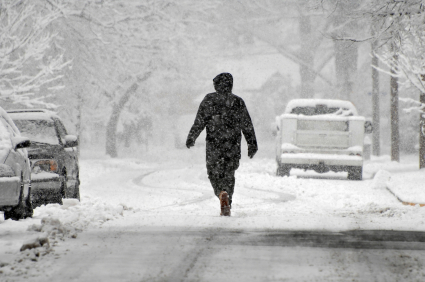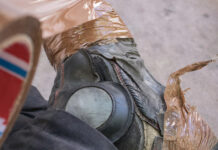Frostbite is caused by exposure of the body to the cold. Several factors contribute to the danger and severity of frostbite. The length of time exposed to the cold and the actual temperature outside make a big impact to the risk. The wind chill factor and the humidity in the air can also be important circumstances. High altitudes can even pose a danger. Wetness of clothing, shoes or body coverings increases the chances significantly. If these conditions are extreme enough it is possible for frostbite to occur in just minutes to exposed body parts. The elderly and the young are particularly susceptible to frostbite. Persons with circulatory problems, previous cold injuries and those who recently lost blood due to an injury are also more likely to suffer frostbite.
Frostbite is the freezing of the skin and/or the bodily tissues under the skin. The fluids in the body tissues and cellular spaces freeze and crystallize. This can cause damage to the blood vessels and result in blood clotting and lack of oxygen to the affected area. The hands, feet, ears, nose and face are the most commonly affected parts of the body. Serious cases of frostbite have been known to kill and damage tissue to the extent that amputation has been required. A qualified medical professional best evaluates the extent of frostbite.
There are three stages of frostbite. The first and least severe is frostnip, which is when one experiences pins and needles and the skin is very white and soft. Sitting in a warm bath can reverse this. The second stage is superficial frostbite where the skin feels numb, waxy and frozen. Ice crystals form in the skin cells and the rest of the skin remains flexible. Blistering may occur in this stage. The third and final stage is deep frostbite. This is the most serious stage. There is no feeling in the affected area and usually no blistering. Loss of limbs and serious infection most often occur when this stage is reached. If any of these symptoms or stages occur it is important that you seek a medical professional.
The best way to prevent injury is to prevent frostbite. Proper clothing for winter weather is essential to protection. Winter apparel should insulate from the cold, let perspiration evaporate and protects against wind, rain and snow. Layering light, loose clothing will trap air, yet provide adequate ventilation. The best fabrics for extreme cold include wool, polypropylene and water-repellent materials. Coverings for the head and neck are vital. Hoods, scarves, earmuffs and balaclavas will also give extra protection. You should be sure to keep your feet and toes warm. Wearing two pairs of socks is a good idea. Well-fitted Insulated Boots that are high enough to cover the ankles will provide more protection as well. Mittens or gloves are essential to keep your hands safe. Tight clothing can decrease the blood flow, which creates more risk, so make sure clothing is loose fitting yet appropriate for outdoor working conditions.
Other preventative measures include staying out of extremely cold weather when possible. If you must be working outside try to come into the warm weather to keep your body and blood warm and to stop any beginnings of frostbite.
Frostbite can be a serious, disabling condition. Use your head! Keep safety in mind when working in cold weather. When working outside during the frigid winter months be sure to be prepared for the cold with many layers and gloves, hats, scarves and earmuffs. It is possible to prevent frostbite by following simple standard rules that will keep you safe.




